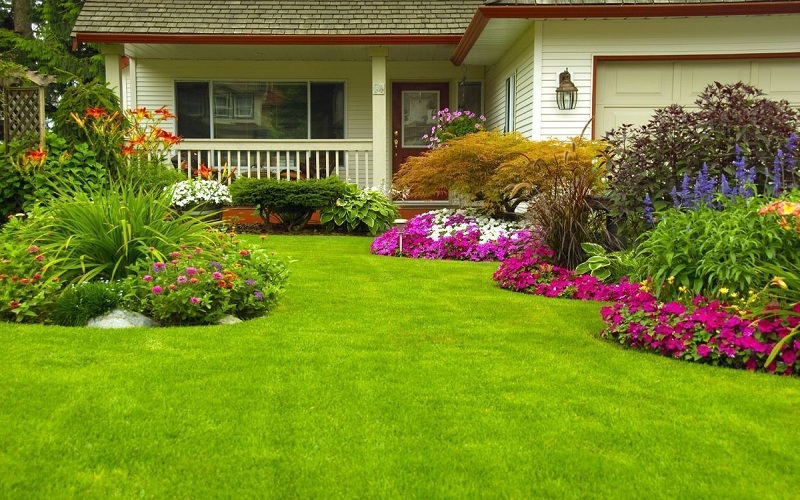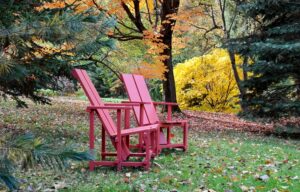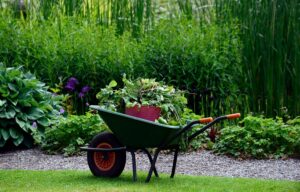Landscaping isn’t just about creating a visually appealing outdoor space; it’s also about preserving the environment for future generations. With increasing concerns about climate change and environmental degradation, eco-friendly landscaping has become more than just a trend—it’s a necessity. By implementing sustainable practices and choosing native plants, you can create a beautiful landscape that benefits both your property and the planet.
Understanding Eco-Friendly Landscaping
Eco-friendly landscaping, also known as sustainable landscaping or green landscaping, focuses on minimizing environmental impact while maximizing the aesthetic appeal of outdoor spaces. It involves using environmentally friendly practices and materials to design, install, and maintain landscapes.
Benefits of Eco-Friendly Landscaping
Conservation of Resources: Eco-friendly landscaping reduces water consumption, minimizes waste generation, and promotes the efficient use of energy and materials.
Biodiversity Preservation: By incorporating native plants and creating habitats for wildlife, eco-friendly landscapes support local biodiversity and contribute to the health of ecosystems.
Improved Air and Water Quality: Planting trees and native vegetation helps improve air quality by absorbing carbon dioxide and releasing oxygen. Additionally, eco-friendly landscaping practices help prevent soil erosion and reduce runoff, thus improving water quality.
Cost Savings: While initial investments in eco-friendly landscaping may be slightly higher, the long-term savings on water, maintenance, and energy costs can be significant.
Principles of Eco-Friendly Landscaping
Water Conservation: Incorporate water-saving techniques such as drip irrigation, rainwater harvesting, and xeriscaping (using drought-tolerant plants). Mulching helps retain soil moisture and suppress weed growth.
Native Plants: Choose plants that are native to your region, as they are better adapted to local climate and soil conditions. Native plants require less water, fertilizer, and pesticides, reducing the need for maintenance inputs.
Wildlife Habitat Creation: Design landscapes that provide food, shelter, and nesting sites for birds, butterflies, bees, and other beneficial insects. Include features like bird feeders, butterfly gardens, and native plant patches to attract wildlife.
Composting and Recycling: Implement composting practices to recycle organic waste and enrich soil fertility. Use recycled materials such as reclaimed wood, recycled plastic lumber, and salvaged stone in landscaping projects.
Energy Efficiency: Strategically plant trees and shrubs to provide shade and reduce the need for air conditioning in summer. Incorporate permeable paving materials to reduce heat island effect and allow rainwater infiltration.
Chemical-Free Maintenance: Avoid the use of synthetic pesticides, herbicides, and fertilizers that can harm the environment and human health. Instead, use organic alternatives or practice integrated pest management (IPM) techniques.
Practical Tips for Eco-Friendly Landscaping
Plan Before Planting: Assess your site’s soil, sunlight, and drainage conditions before selecting plants. Choose species that are well-suited to the site’s microclimate and require minimal inputs.
Plant Diversity: Create a diverse mix of plant species to support a wide range of pollinators and beneficial insects. Incorporate a variety of flowering plants, grasses, shrubs, and trees to provide year-round interest and ecological value.
Water Wisely: Water your landscape early in the morning or late in the evening to minimize evaporation losses. Install a rain sensor on your irrigation system to prevent watering during rain events.
Maintain Healthy Soil: Practice soil conservation techniques such as mulching, composting, and cover cropping to improve soil structure and fertility. Healthy soil supports plant growth and reduces the need for fertilizers and pesticides.
Use Renewable Materials: Opt for eco-friendly hardscape materials such as permeable pavers, recycled glass mulch, and sustainably sourced wood. These materials minimize environmental impact and add unique aesthetic appeal to your landscape.
Provide Habitat Features: Incorporate birdhouses, bat boxes, and insect hotels into your landscape design to provide additional habitat for wildlife. Create brush piles and leave leaf litter for small mammals and insects to shelter in.
Case Studies in Eco-Friendly Landscaping
Green Roof Gardens: Urban buildings with green roofs not only reduce heat island effect and stormwater runoff but also provide habitat for birds and insects.
Rain Gardens: These shallow depressions planted with native vegetation help capture and filter stormwater runoff, preventing pollutants from entering waterways.
Permaculture Designs: Permaculture principles emphasize mimicking natural ecosystems to create productive and sustainable landscapes. By integrating food production, water management, and biodiversity conservation, permaculture designs maximize ecological benefits.
Conclusion
Eco-friendly landscaping is a holistic approach to outdoor design and management that prioritizes environmental stewardship and sustainability. By following the principles of water conservation, native plant selection, wildlife habitat creation, and chemical-free maintenance, you can create landscapes that are both beautiful and ecologically resilient. Whether you’re a homeowner, landscaper, or property manager, incorporating eco-friendly practices into your landscaping projects can make a positive difference for the planet and future generations.




